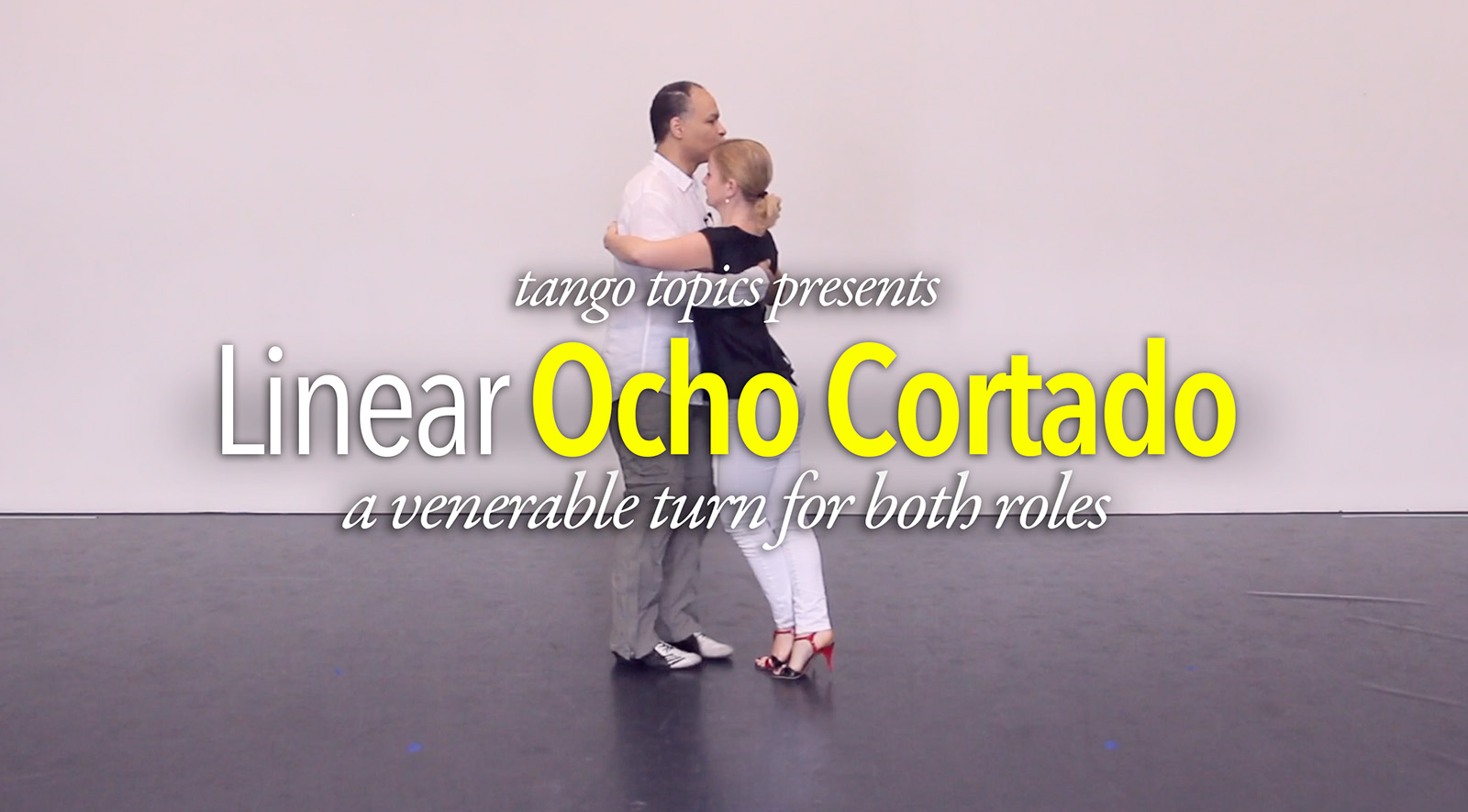The word ‘Cortado’ translates into English as ‘cut’ or cutted (which isn’t a word in English) or an Ocho that is Cut. In today’s version of the modern Ocho Cortado, it rarely resembles its Ocho roots. It’s no wonder when people say the words for the first few times they get a little confused and can’t see the embedded Ocho properties that are sitting in front of them.
When we think of ochos, we tend to only think of BACK (Traveling) Ochos, not their Forward variety which is where the confusion comes from. Further, still it’s the interruption that of the Ocho (hence the ‘cut’ part) that people don’t see which creates even more confusion.
Today’s Tango Topic looks at this venerable Tango Turn and Vocabulary and looks at the Linear version of it, known as “The Linear Ocho Cortado”. So named because it’s done along a line. It should be noted that Tango Topics contains several variations of this venerable piece of vocabulary and that you really should check them all out. There’s lots and lots and lots of variation with this stuff. Further, still it should also be noted that this Linear Ocho Cortado is the ‘vanilla’ version of the Cortado. It’s the most common form and in Today’s Tango Topic we will not be showing any of the variations of the Cortado. For that, you really should go visit the link below and look at the other options. That said, let’s dive right into Today’s Tango Topic: The Linear Ocho Cortado.
What is a ‘Linear Ocho Cortado’ ? The are multiple versions or ideas of the Cortado. However, this particular piece of vocabulary is also what we consider to be one of the Seven Foundational Moves of Tango that every dancer must learn in order to be a socially competent dancer. Note that we said, not ‘Lead’, not ‘Follower’, but ‘Dancer’. That’s because both roles have a responsibility to this piece of vocabulary which we detail below. The Linear Ocho Cortado or ‘LOC’ as we’ll refer to it from here on out, is not something that is learned in a very specific progression of ideas. First and foremost you must learn how to walk, then Disassociation and Applied Disassociation which translates to Traveling Ochos, then Turns (Usually the Follower’s Molinete to the Lead’s Giro, and the Milonguero Turn as well), then the Argentine Cross, and finally the LOC. The LOC gets its name from the fact that it’s done in a line or along a linear path within the Line and Lane of Dance and does not break that convention. The LOC has multiple uses, from a Parallel System walk (shown in the full video above) to an endpoint or completion element. Meaning that you’ll use it as a resolution from a Molinete/Giro structure (mostly) as an example. The vocabulary itself is done on the beat, while the variations on a theme can be done in half-time, as well as double time. The LOC can be interpreted many, many, many different ways from a musical perspective. That’s one reason why it’s so venerable and versatile.

About The Video. Total runtime for this video is 26:19. Lead and Follower Steps and Technique are separated. The item in bold is unedited and is at the top of this article as a sample.
Introduction – 01:46
Lead Steps – 04:08
Follower Steps – 03:02
The Couple’s Posture – 01:46
Lead/Follower Steps Together – 02:37
The Importance of the ‘Replacement Step’ – 02:23
The Follower’s Side Step Error – 03:04
The Close Embrace Version – 01:05
The Walking Example – 02:20
The Embrace Reminder/Closure – 03:16

